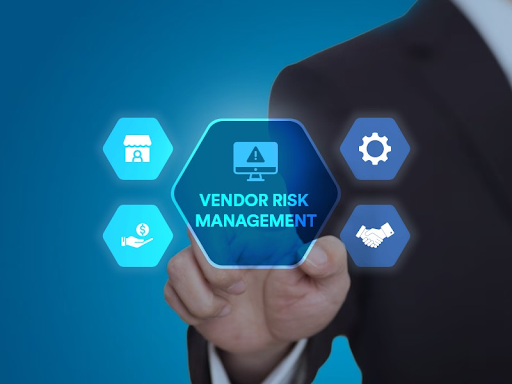In today’s interconnected business landscape, a comprehensive vendor risk assessment has become crucial for organizations seeking to manage their third-party relationships effectively. As businesses increasingly rely on external partners for various services, it is vital to assess and mitigate the risks associated with these vendors. However, despite the growing importance of these assessments, many organizations still fall into common pitfalls. In this article, we’ll explore some of the most frequent mistakes made during vendor risk assessments and provide actionable tips on how to avoid them.
The Importance of Vendor Risk Assessment
A vendor risk assessment involves evaluating potential and existing vendors to identify any risks that may arise from outsourcing services, from security concerns to financial stability. While many companies are aware of the importance of this process, several challenges can arise when conducting assessments. These challenges often stem from inadequate frameworks, lack of proper tools, or simply not understanding the full scope of risks associated with third-party relationships.
Pitfall #1: Insufficient Data Collection
One of the most common mistakes companies make during a vendor risk assessment is not gathering enough relevant data. This oversight can lead to an incomplete understanding of the vendor’s risk profile, making it difficult to assess potential threats. Without the proper data, it becomes nearly impossible to make informed decisions about whether to move forward with a vendor relationship.
How to Avoid It
To avoid this pitfall, businesses should ensure they have a robust data collection process in place. Start by gathering information about the vendor’s financial stability, security protocols, compliance history, and any other relevant data points that could impact the relationship. Additionally, make sure the data collection process is comprehensive and structured to cover all the necessary areas, from operational risks to reputational risks.
Pitfall #2: Failing to Prioritize Risks
Another common mistake in vendor risk assessment is not prioritizing risks effectively. While it’s important to identify all potential risks, businesses often waste valuable time and resources by focusing on less critical threats while neglecting more significant issues. This can lead to misallocated efforts and could leave your organization vulnerable to more pressing risks.
How to Avoid It
Risk prioritization should be based on the severity and likelihood of each potential threat. Companies can categorize risks into different levels, such as high, medium, or low, and address the most critical risks first. A good third-party vendor management program should have clear risk categories to help streamline this process. By aligning your priorities with the most pressing concerns, you can ensure that your organization is well-prepared to handle the most significant risks effectively.
Pitfall #3: Ignoring Third-Party Risk Management Software
Many organizations overlook the value of using third-party risk management software during their vendor risk assessment process. These tools can streamline the entire process by automating data collection, analysis, and reporting. Without leveraging such technology, companies may find themselves overwhelmed by manual processes, which are not only time-consuming but also prone to errors.
How to Avoid It
Investing in the right third-party risk management software can significantly enhance the efficiency and accuracy of your vendor risk assessments. These tools can assist in tracking vendor performance, monitoring risks, and ensuring compliance with relevant regulations. By incorporating such software into your workflow, you can ensure a more streamlined and reliable risk assessment process.
Pitfall #4: Neglecting to Define the TPRM Meaning
A frequent oversight in vendor risk assessment is not fully understanding the TPRM’s meaning and how it applies to the specific context of your business. TPRM (Third-Party Risk Management) is the process of managing risks that arise from third-party vendors, and failing to define and implement a clear strategy can lead to inefficiencies and missed opportunities to mitigate risks.
How to Avoid It
To avoid this pitfall, it’s essential to have a clear understanding of what TPRM means for your organization. Establish a formal TPRM framework that aligns with your organization’s risk tolerance and business objectives. This framework should outline your process for assessing, managing, and monitoring third-party risks, ensuring consistency and clarity across your vendor relationships.
Pitfall #5: Inadequate Communication with Vendors
Effective communication is a cornerstone of any successful vendor relationship, but it is often overlooked during risk assessments. Organizations may fail to communicate expectations clearly to vendors or may not establish effective channels for ongoing communication regarding risk management efforts. This can result in misunderstandings and potential issues down the line.
How to Avoid It
Establish a strong communication protocol with your vendors from the outset. Clearly define your expectations and ensure that both parties are aligned in terms of risk management goals. Regular updates, meetings, and check-ins can help maintain an open dialogue and ensure that any emerging risks are addressed promptly.
Pitfall #6: Failing to Conduct Ongoing Assessments
A vendor risk assessment is not a one-time event; it requires continuous monitoring. Many organizations make the mistake of treating vendor assessments as a one-off task, only to realize that their vendor relationships have evolved, and risks have changed. This can lead to unforeseen issues that could have been mitigated with ongoing assessment and monitoring.
How to Avoid It
To ensure the continued effectiveness of your vendor risk assessment, establish a process for regular reassessments. Schedule periodic evaluations to monitor any changes in vendor risk profiles, especially as regulations, markets, and business practices evolve. Ongoing assessments help identify emerging risks early, ensuring that your risk management strategy remains up-to-date and effective.
Conclusion
A comprehensive vendor risk assessment is critical for businesses that rely on third-party vendors. By avoiding common pitfalls such as insufficient data collection, failing to prioritize risks, ignoring the value of third-party risk management software, and neglecting ongoing assessments, organizations can significantly enhance the effectiveness of their vendor risk management processes. A strategic approach, combined with the right tools and processes, will help your business mitigate potential risks, ensure compliance, and build stronger, more reliable vendor relationships.


